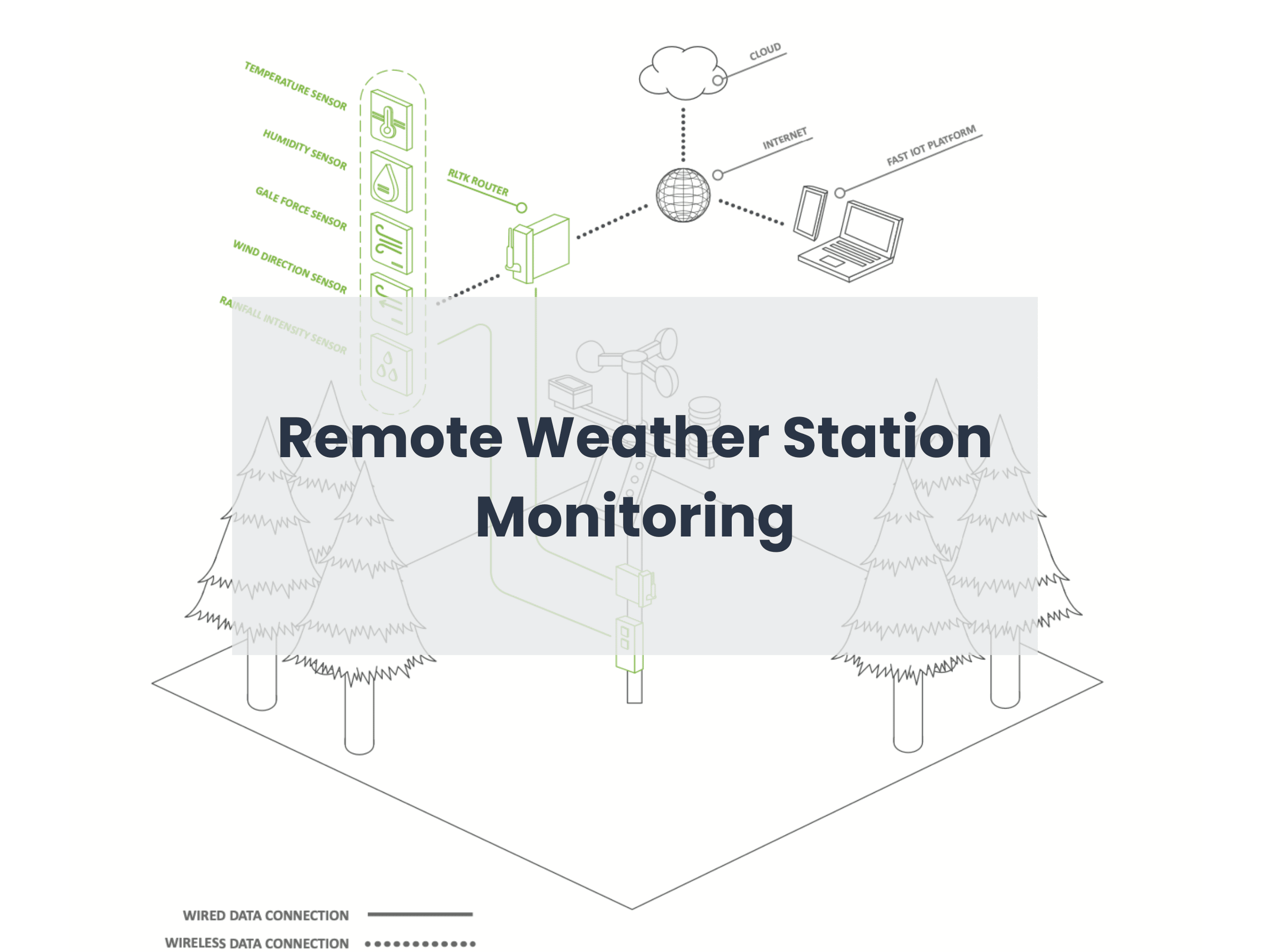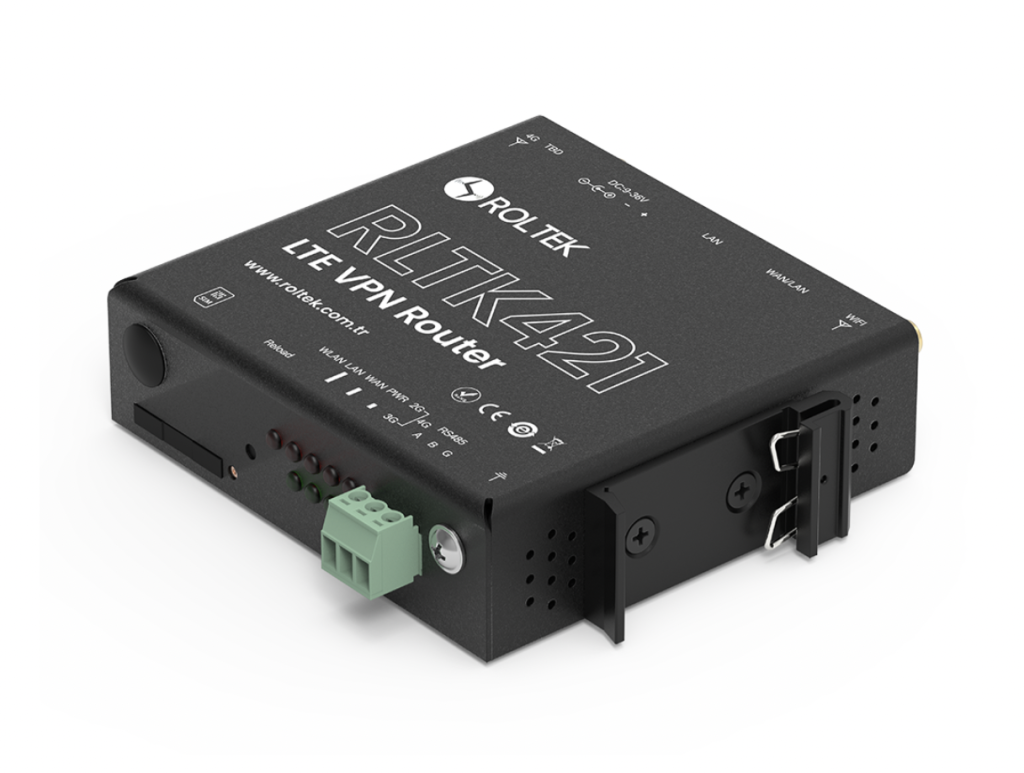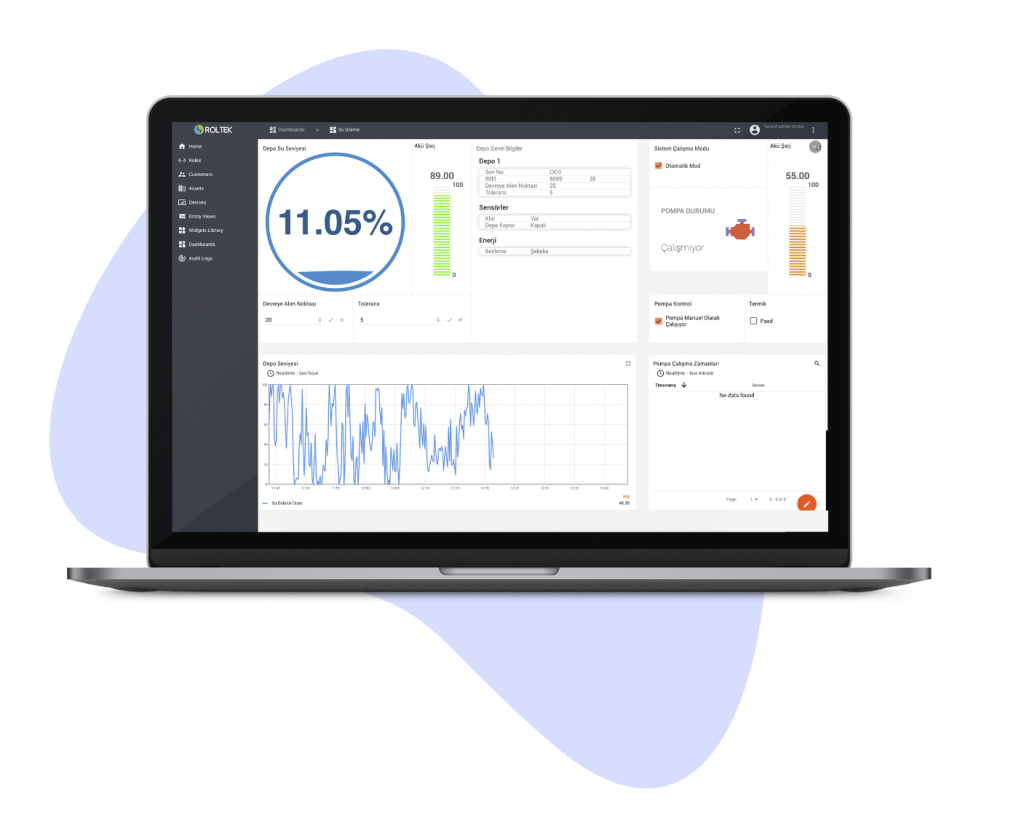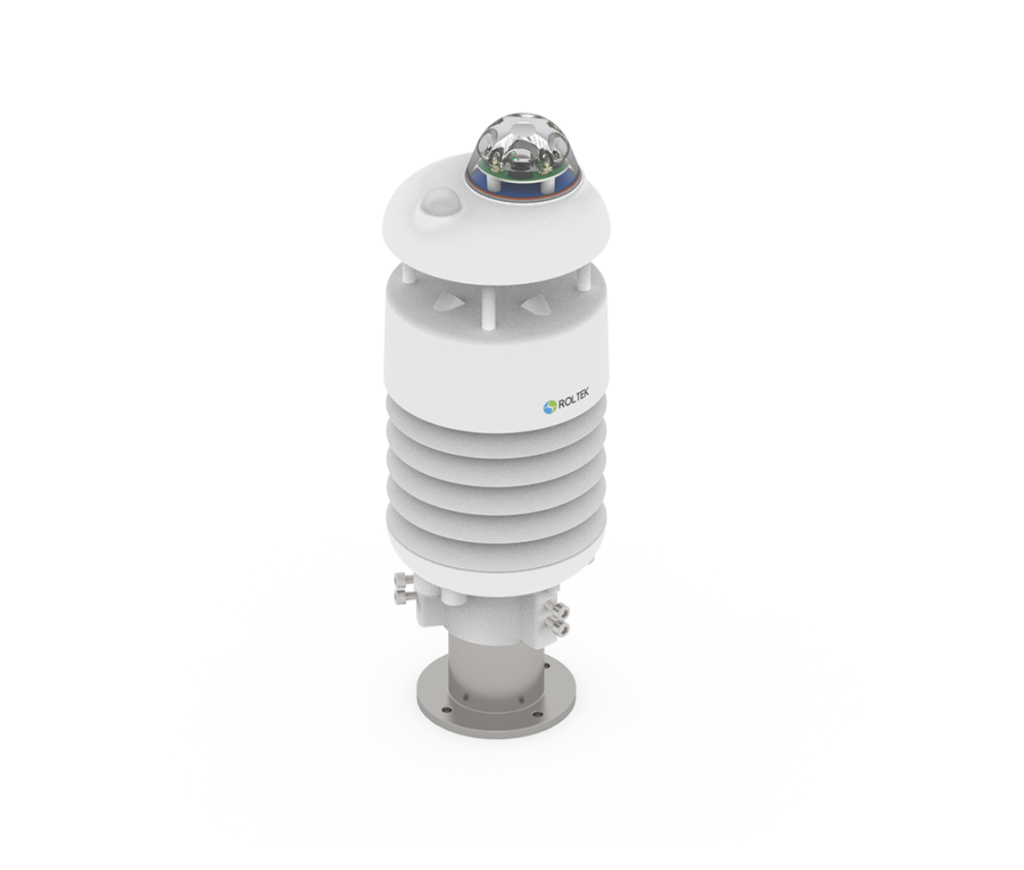The Importance of Remote Meteorological Station Data
Remote Weather Station Monitoring today, it is one of the cornerstones of smart cities and smart agriculture. Accurate and reliable measurement of air temperature, humidity, wind intensity, precipitation, and other atmospheric conditions provides many benefits for farmers to plan their agricultural activities, for city governments to manage urban areas, and for improving the quality of life in general. This data goes beyond just daily weather forecasts. This concept is crucial in areas like urban planning, energy efficiency, environmental protection, disaster management.
For example, in agriculture, weather data provides farmers with important information about which crops should be planted and when. Additionally, data such as rainfall amount and wind speed help to use irrigation systems effectively. It ensures efficient management of water. This increases agricultural productivity by saving water. It promotes an environmentally responsible agricultural practice.
In smart cities, meteorological data plays an important role in areas such as traffic management, energy use, and infrastructure planning. For example, it predicts traffic jams due to sudden rains or strong winds. It is vital to regulate traffic flow and prevent accidents. Additionally, it optimizes energy consumption. It uses weather data to adapt infrastructure to climate change.

Meteorological Data Processing and Application Control Solution;
With its uninterrupted and strong 4G LTE connection, the RLTK Router transmits the weather station’s sensor information in real time to the Fast IoT Platform, both in rural areas and in the city center. The data is processed here it’s visualized and reported. In exceptional cases, relevant parties are informed. It activates different systems, such as irrigation systems and ventilation systems, according to the valuable meteorological data collected on the Fast IoT Platform or disables it.
The advancement of sensor technology has significantly accelerated the collection and analysis of meteorological data. It can be carried out efficiently. The data must be processed accurately to gain meaning and offer solutions to real-world problems.
Processing sensor data often involves complex data analysis techniques. These techniques analyze large data sets. Finds meaningful patterns and relationships ınterprets the results. For example, it combines data such as air temperature, humidity, and wind speed. Optimizes irrigation timing in agricultural fields. Decisions are made for various applications, such as managing traffic flow in cities.
Additionally, the sensor visualizes the data. Visualize with charts, maps, or other visual aids. These visualizations make the data easier to understand and support decision-making processes. For example, weather maps or graphs show how weather conditions vary regionally. It helps make more effective decisions in emergency situations. Using correct analysis techniques and effective visualization of data contributes greatly to the development of smart cities and smart agriculture.
Air Monitoring System in Smart City and Agriculture Applications
Smart city and smart agriculture applications today require strategic use of meteorological data. This data allows both cities and agricultural areas to be managed more efficiently and sustainably.
-
- Weather Forecasts and Planning in Agriculture: Weather is a vital factor in the agricultural sector. Meteorological data provides important information to farmers. This aids in making informed decisions regarding planting timing, irrigation planning, and harvest forecasts. This increases agricultural productivity and enables more efficient use of resources.
- Water and Disaster Management in Urban Planning: In smart cities, meteorological data is critical for water management and disaster risk management. In particular, data such as rainfall amount and wind speed enable decisions to be made on issues such as management of water resources and determination of flood risk. This helps cities become safer and more sustainable.
- Air Pollution Monitoring and Air Quality Indices: Meteorological data is used to monitor air pollution levels and create air quality indices. This data is important to protect the health of city residents and support environmental sustainability.
- Energy Management and Transportation Planning: Weather data is of great importance in energy management applications such as solar panel efficiency, performance of wind turbines and energy demand forecasts. Similarly, traffic flow and road condition forecasts are vital for regulating urban transport and reducing traffic congestion.
Meteorological data used in these areas enables smart city and smart agriculture applications to work more effectively and efficiently. Therefore, importance should be given to the collection, processing and use of this data.
RLTK421 Industrial 4G/LTE VPN Router: Remote Weather Station Monitoring
The RLTK421 Industrial 4G/LTE VPN Router is a compact, rugged, and powerful industrial router specially designed for industrial IoT applications. RLTK421 is equipped with 2x Ethernet (LAN/WAN) and WiFi with hotspot functionality. Multiple VPN options are available, such as open VPN, IPsec, firewall, hotspot, and remote connection. It provides a secure and stable internet connection for industrial applications.
-
- IPsec VPN, PPTP, L2TP, OPEN VPN, GRE etc.
- 2x Ethernet Ports (LAN/WAN)
- 1x SIM
- wifi
- RS485, RS232
- Hardware Monitoring System
Fast IoT Platform: Remote Weather Station Monitoring
The Fast IoT Platform enables effective processing, visualization, and analysis of meteorological data. It contributes to smart city and smart agriculture applications working more efficiently and reliably.
The FAST IoT platform is highly customizable. You have the ability to create custom workflows, rules, and alerts tailored to your needs. Our platform has a user-friendly and intuitive interface. The interface provides a straightforward method for managing IoT devices and data. The use of this tool does not require technical expertise.
-
- Drag&Drop Visualization
- Drag&Drop Rules Engine
- Data collecting
- Low Code Platform
- Alarm Management
- Multi-Tenant
Air Monitoring Solution Method; SensNode-METEO-MB
The SensNode Weather Station is a critical device used to monitor weather conditions and collect meteorological data. The Meteorological Station also plays an important role in detecting extraordinary situations and reporting them to the relevant people.
SensNode-meteorological Station (MB Series) is a weather station used to measure and collect meteorological data. The Weather Sensor can measure various meteorological data such as air temperature, relative humidity, barometric pressure, light intensity, precipitation (optical), PM2.5, PM10, wind speed and wind direction (ultrasonic), as well as CO2. SensNode-Meteorological Station can be used to monitor weather conditions, make weather forecasts, and collect meteorological data. It is also ideal for use in harsh environments such as the outdoors, agriculture, or smart cities.
-
- Air Temperature (-40 to +85 °C)
- Air Humidity (0 to 100%RH)
- Barometric Pressure (300 ~ 1250 hPa)
- Light Intensity (0 ~ 188000 Lux)
- Wind Speed (Ultrasonic) (0 ~ 60 m/s)
- Wind Direction (Ultrasonic) (0 ~ 360°)
- Rain Intensity (Optical) (0 ~ 200 mm/s)
- PM 2.5 (0-1000μg/m3)
- PM 10 (0-1000 μg/m³)
- CO2 (400 to 10000 ppm)
Intelligent Decision Making Processes Using Data
Regular collection and analysis of meteorological data provides accurate and timely information to decision-makers. They can make more informed decisions based on this data when assessing disaster risks. In addition to identifying potential risks in advance, meteorological data also plays an important role in the development of risk management strategies. Intelligent decision-making processes enable more efficient use of resources. Making the right decisions is crucial for achieving environmental and economic sustainability goals.
The efficient collection, processing, and utilization of meteorological data leads to enhanced intelligent decision-making processes. It allows the development of more sustainable solutions. This helps build a more robust and resilient future in areas such as agriculture and urban planning.
If you want to get more information about Remote Weather Station Monitoring Systems, contact us.
Instagram: roltek2014
LinkedIn: Roltek Technology





